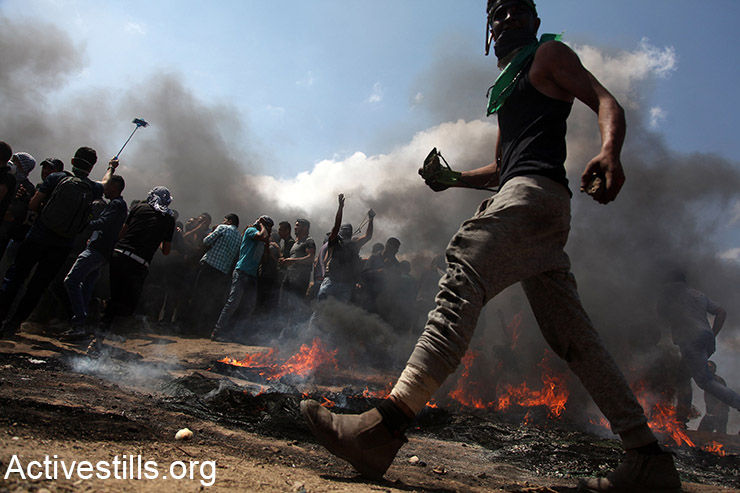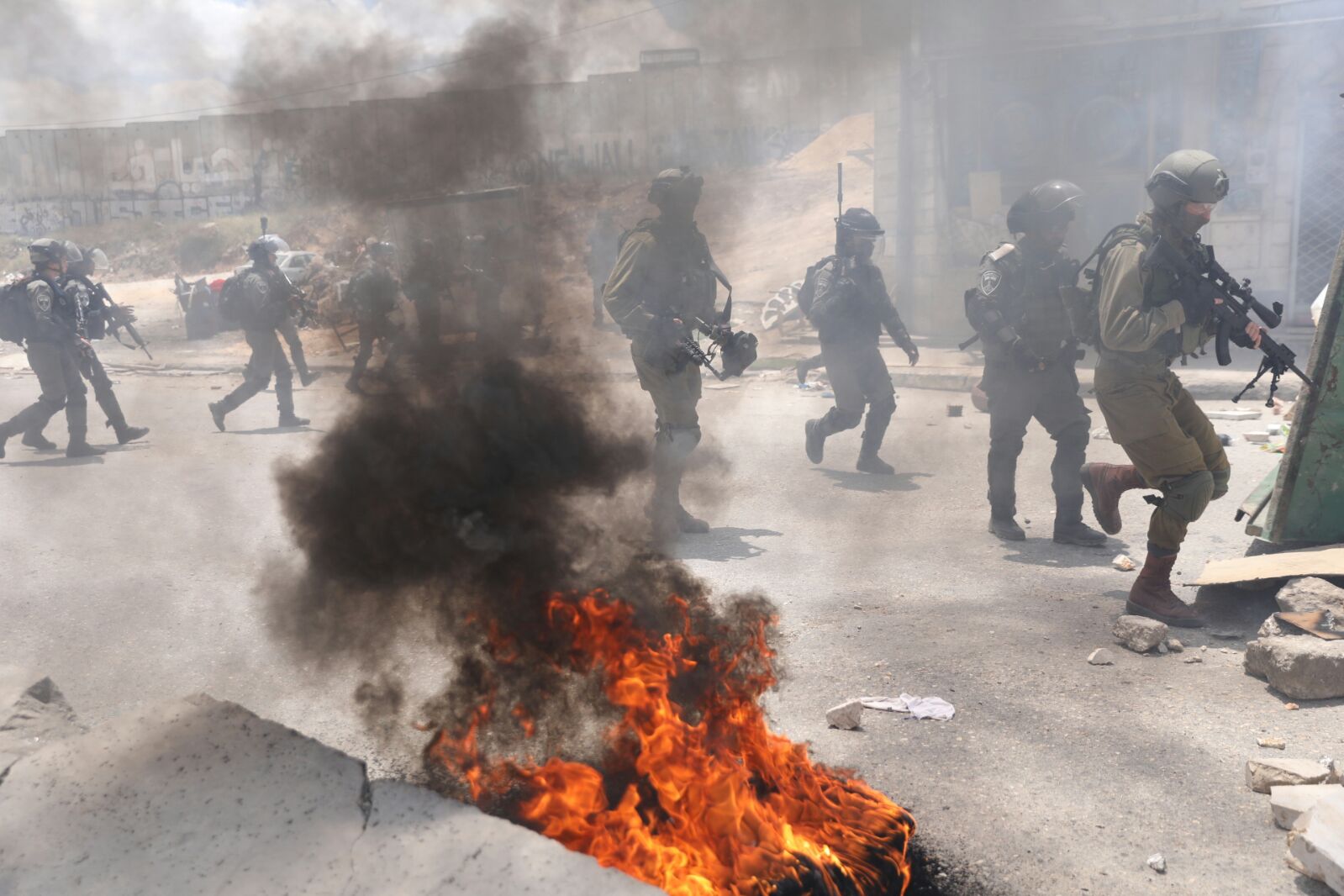Ahead of Nakba Day, marking 70 years since the creation of the Palestinian refugee problem, tens of thousands in Gaza were expected to march on the border, culminating 45 days of protests demanding the right of refugees to return, an end to Israel’s siege. Protests were also taking place in the West Bank and Jerusalem, where the United States is opening its new embassy.
[This post will be updated as events unfold. All times are local.]
9:30 p.m.
The Ministry of Health in Gaza says that that the number of Palestinians killed by Israel on the Gaza border has risen to 55.
7:10 p.m.
The Ministry of Health in Gaza says that that the number of Palestinians killed by Israel on the Gaza border has risen to 52.
5:30 p.m.
Gaza’s Ministry of Health is reporting that the number of Palestinians killed today by Israeli forces in Gaza has risen to 43.
4:40 p.m.
Israeli soldiers have killed 41 Palestinians and wounded 1,960, according to the Ministry of Health in Gaza.
3:57 p.m.
38 Palestinian protesters shot and killed by Israeli snipers, according to the Ministry of Health in Gaza. 1,703 Palestinians have been wounded.
3:28 p.m.
Israeli snipers have killed 37 Palestinian protesters inside the Gaza Strip so far on Monday and hundreds more were wounded, either from gunshot wounds or other injuries, according to the Ministry of Health in Gaza.
Israeli human rights organizations filed a legal challenge against the Israeli army policy of shooting unarmed protesters on April 15. The High Court of Justice has yet to return a decision on whether it is legal to shoot unarmed civilian protesters. Dozens of people have been killed and thousands wounded in that time.
2:54 p.m.
The death toll of Palestinian protesters killed by Israeli snipers inside the Gaza Strip on Monday has risen to 25, according to the Gaza Heath Ministry. That brings the total number of Palestinian protesters killed by Israeli soldiers since March 30 to 74 people. Around 500 people have been wounded by live ammunition so far on Monday.



2:15 p.m.
Israeli army snipers have killed at least 16 protesters inside the Gaza Strip so far on Monday, according to the Health Ministry in Gaza. According to the Israeli army, there are 35,000 protesters at 12 different locations inside the Strip. Protests were also taking place at numerous locations in the West Bank, including at the Qalandiya checkpoint separating Ramallah and Jerusalem, where dozens have been reported wounded so far.
***
Tens of thousands of Palestinians were expected to protest in Gaza, the West Bank, and Jerusalem on Monday, ahead of the 70th Nakba Day, the culmination of the Great Return March, and the opening of the U.S. Embassy in Jerusalem. Nakba Day marks when 700,000 Palestinians were expelled or fled their homes during the 1948 war and its aftermath, and Israel’s refusal to allow their return, creating the Palestinian refugee problem.
The Great Return March demonstrations began on March 30 and have continued for over seven consecutive weeks. Demonstrators are demanding an end to the siege of Gaza and the right to return to their towns, cities, and villages located in what is now Israel. Some 70 percent of Gaza’s population are refugees, meaning they, their parents, or their grandparents fled or were among those expelled during the war 70 years ago.
The Return March has consisted not only of the weekly Friday protests but also of a tent encampment near the Israeli border fence — a colorful staging ground where Palestinians of all ages and entirely families have gathered for a range of activities.
The Return March organizers have also stressed that the protests are nonviolent. “We want families. We want to live in peace — with the Israelis,” one of the organizers told +972 prior to the 45-day protest’s start. “We will make sure the protest doesn’t escalate to violence — at least from our end.”
Israel, however, has deployed hundreds of snipers along the Gaza border with orders to use live ammunition even against individuals who do not immediately pose a danger to human life.
Prior to Monday, Israeli snipers had killed 49 Palestinians and wounded nearly 10,000 Palestinian protesters since the protests began. Among the wounded and killed were at least half a dozen journalists, including Yaser Murtaja and Ahmed Abu Hussein — both of whom were wearing jackets clearly marked “PRESS” when they were shot. There have been zero Israeli casualties.
